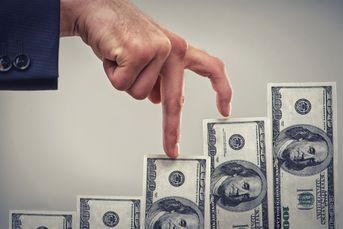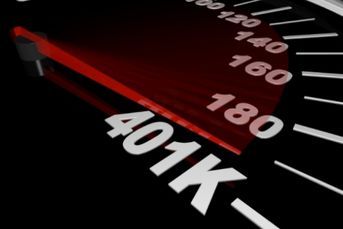Retail investors: Inch by inch, slowly they return
Contrary to reports, retail investors are getting back into the stock market. They're just taking it slow — as evidenced by the record inflows into balanced funds.
Investors are pumping record amounts of money into U.S. balanced funds, whose freedom to buy stocks and bonds made them barometers for gains in the biggest bull markets of the past half century.
Managers led by Capital Research & Management Co. and Invesco Ltd. received $35.2 billion from January to April, the most in any four months, according to data compiled by Bloomberg and the Washington-based Investment Company Institute. Assets in the funds increased 3.6 percent, compared with 1.2 percent for those that only buy equities.
While valuations and trading volume show individuals burned in the financial crisis have been slow to join the record-breaking rally in the Standard & Poor’s 500 Index, the growth of funds that now balance more than $1 trillion of stocks and bonds shows the reluctance is easing. Deposits with hybrid funds reached records in February 1994 (SPX), when the S&P 500 was in the middle of a 417 percent gain, and in April 2004 amid a 101 percent rally.
“It shows the early stages of the healing process and reduction in this still pervasive negative psychology about the stock market,” Michael Holland, chairman of New York-based Holland & Co., which oversees $4 billion, said in a May 22 phone interview. “We’re four years into a bull market and levels of stock ownership remain very, very low.”
Fund Returns
The Holland Balanced Fund (HOLBX) has beaten 96 percent of its peers in 2013 and 70 percent in the last five years, according to Bloomberg data. He has about 30 percent of the funds in investments other than equities, mostly short-dated Treasuries, and favors large-cap companies in the stock market. Among the top holdings are Home Depot Inc. (HD), Berkshire Hathaway Inc. and 3M Co., which have outperformed the S&P 500 by at least 3.1 percentage points this year.
The S&P 500 fell 1.1 percent to 1,649.60 in its first weekly decline since April 19 as Chinese manufacturing contracted and Federal Reserve Chairman Ben S. Bernanke said policy makers could “step down” the pace of asset purchases if the labor market improves. Futures on the equity benchmark climbed 0.5 percent to 1,659 at 8:17 a.m. in London today.
Declines came as a report on Chinese manufacturing trailed economists’ forecasts, sending the Topix Index (TPX) down 6.9 percent on May 23, the worst drop since the 2011 Fukushima disaster. The S&P 500 slumped four of the last five days.
Market Breadth
Even with the decline, 461 of the 500 companies in the benchmark U.S. gauge trade above their 200-day moving average are up for the year. The S&P 500 has risen 144 percent since bottoming in March 2009 during the worst financial crisis since the Great Depression.
Among the biggest managers in hybrid strategies, Los Angeles-based Capital Research’s American Balanced Fund (RLBGX), with 70 percent in equities and about 29 percent in bonds, saw assets increase 11 percent to $61.9 billion this year, compared with an 8.9 percent increase in the same period last year. The fund’s top three equity holdings are Home Depot, Chevron Corp. (CVX) and Berkshire Hathaway.
Invesco V.I. Equity & Income Fund’s assets rose 17 percent to $1.1 billion. The Atlanta-based fund has 65 percent in stocks and about 28 percent in bonds, and owns JPMorgan Chase & Co. (JPM) and EBay Inc., according to data compiled by Bloomberg.
U.S. mutual funds that own equities and bonds have returned about 8.8 percent on average in 2013, compared with the S&P 500’s 16 percent gain and a loss of 1 percent for 10-year Treasuries, according to Bloomberg data on mutual funds with an average allocation of 62 percent to equities and 25 percent to bonds.
Best Return
With the S&P 500 posting its best return for the first four months of the year since 1998, balanced funds have added more than twice the $16.5 billion U.S. equity funds received, data from ICI and Bloomberg show.
Individual investors bought and sold more stock last quarter than in the previous one. Daily trades at brokerages Charles Schwab Corp., TD Ameritrade Holding Corp. and E*Trade Financial Corp. rose about 14 percent in the first three months of the year, according to data compiled by Bloomberg.
“One of the common denominators for funds that are gaining a lot of assets is that they have very flexible mandates,” Michael Fredericks, head of retail multi-asset client solutions for New York-based BlackRock Inc., said by telephone. He manages the BlackRock Multi-Asset Income Fund (BAICX), which oversees $3.4 billion that started in 2008, and the BlackRock Multi-Asset Real Return Fund, which started in 2012.
‘Building Portfolios’
“You had huge drawdowns in 2008 and 2009,” Fredericks said. “A lot of investors reflected on that experience and thought, ‘I might not have the stomach for buy and hold. Isn’t there a better approach to building portfolios that doesn’t subject me to so much risk and volatility?’”
The last two times hybrid deposits peaked, the S&P 500 kept gaining. In February 1994, about $18.6 billion was added to the funds over four months, and the S&P 500 more than tripled for the next six years, data compiled by Bloomberg show. When deposits reached another high of $22.3 billion by April 2004, the equity gauge advanced more than 40 percent through October 2007.
U.S. equity-only funds saw an increase the year after hybrids flows hit a record in 1994. They received $112.9 billion in 1995, up 61 percent from the year earlier, surpassing $100 billion for the first time ever, ICI data show.
Average Advance
Investors buying stocks now are entering an advance that is approaching the average five-year duration of bull markets since World War II, according to data compiled by Bloomberg. The S&P 500 has gone more than 100 days without a 5 percent retreat, the longest stretch since February 2007, the data show. The index trades at 16.1 times operating earnings in the last 12 months, the highest since 2010.
“It’s getting late in the day at these valuations, and it’s going to be harder and harder to eke out those returns,” Hayes Miller, who helps oversee about $48 billion as the Boston-based head of asset allocation in North America at Baring Asset Management Inc., said in a phone interview on May 23. “This is going to be a multi-year workout. I wouldn’t want to kid anybody: I don’t think the equity market is going to give us a big blast like it has.”
Economists predict the U.S. economy will expand 2 percent this year, down from 2.2 percent in 2012, according to the median of 83 estimates compiled by Bloomberg. Corporate sales are slowing, as first-quarter revenue contracted 1.2 percent on average for S&P 500 companies, Bloomberg data show.
Bond Preference
While investors are sending record amounts to hybrid funds, bond managers are still getting more. Fixed-income funds took in $82.6 billion in the first four months of the year, adding to the more than $1 trillion that came in the previous four years, ICI data show. Flows to funds that invest in U.S. equities represent less than 5 percent of the $400 billion that came out in the previous four years.
Trading on U.S. exchanges has failed to pick up after falling for the last three years, averaging 6.3 billion shares a day in 2013, the lowest since 2008. While price-earnings ratios are expanding, they remain 17 percent below the average since 1998, according to data compiled by Bloomberg.
The flows into hybrid funds are bullish for U.S. equities because more buyers will lift prices, according to Paul Zemsky, the New York-based head of asset allocation for ING Investment Management, which oversees about $180 billion, including those that invest in both stocks and bonds.
Treasury Returns
“Investors moving money into these funds does lead to money going into the equity market in total,” he said in a May 23 phone interview. “A lot of this money will actually be long money,” Zemsky said. “I’m pretty optimistic on the flows continuing into these categories.”
The S&P 500 has returned about seven times more than 10-year Treasuries since the bull market began, according to data compiled by Bloomberg and Bank of America Merrill Lynch. The yield on 10-year Treasuries was 2 percent last week, near the lowest on record, and it hasn’t climbed above 2.5 percent since the middle of 2011, Bloomberg data show.
Billionaire Warren Buffett’s Berkshire Hathaway Class A shares have climbed 1.9 percent since May 3 when the Omaha, Nebraska-based company reported first-quarter profit that jumped 51 percent. The company, which hauls freight, generates electricity, sells insurance and manufactures building supplies from bricks to paint is benefiting as improvements in the housing market help the U.S. economy. Berkshire Hathaway, the fifth-biggest company in the world by market value, has climbed 24 percent in 2013.
Housing Market
Home Depot, the largest U.S. home-improvement retailer, posted first-quarter profit that topped analysts’ estimates on May 21 and raised its forecast for earnings this year as the housing rebound boosts renovation spending. The stock is up 28 percent this year.
An index of pending home sales increased more than forecast in March, according to a report April 29. While new-home construction in the U.S. dropped last month, it had jumped more than forecast in March as multifamily projects climbed to the highest level in more than seven years, according to Commerce Department figures.
“If you’re not comfortable with moving all into equities and you still feel some pain from 2008, those bad memories, do you want to dip your toe in?” Wayne Lin, a money manager who manages only hybrid funds at Baltimore-based Legg Mason Inc., which oversees about $661 billion, said in a May 22 telephone interview. “The easiest way to do that is put it into a balanced fund or a fund that has dynamic allocation.”
–Bloomberg News–
Learn more about reprints and licensing for this article.






